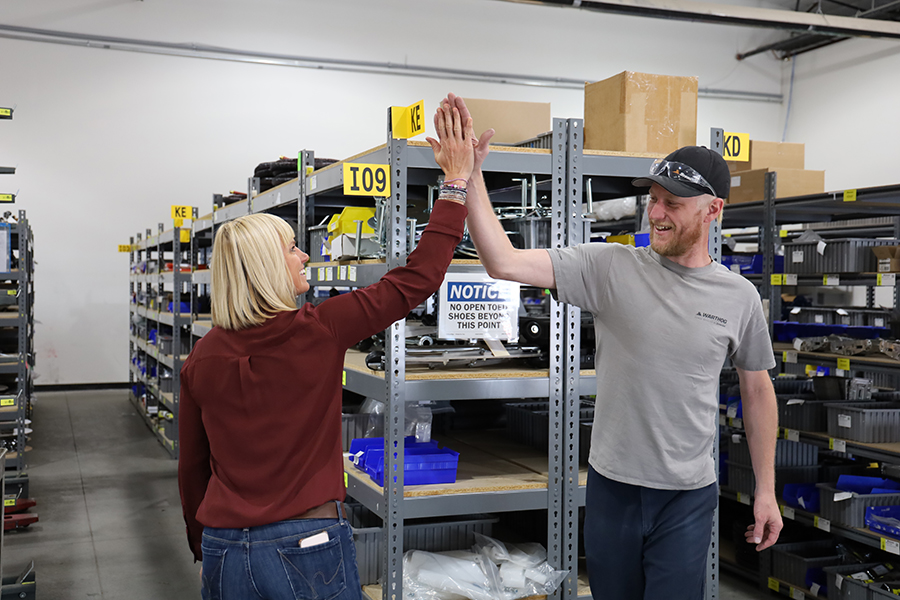Like many CEOs and business leaders, I’ve thought about income inequality and the shrinking middle class. While this far-reaching societal issue is complex and can’t be solved overnight, leaders can make a real difference in their employees’ lives through more equitable compensation and benefits.
While generous compensation can make a significant difference in the day-to-day lives of our teams, salaries alone aren’t enough to build actual savings and wealth. In our economy, the costs of living are very high relative to the average person’s pay, especially considering the current inflationary issues we face. Many people are living paycheck to paycheck, a risky and fragile situation. We used to think that going to college was the best path to a better, more wealthy life, but skyrocketing tuition and crushing debt make it inaccessible for many. Now, even higher degrees do not guarantee a higher salary.
Employee ownership is a broad term; it infers that a company’s employees own stock in the company. There are many forms of employee ownership ranging from stock grants to more complex plans like an employee stock ownership plan (ESOP), which is what we are at StoneAge. Founders or business leaders have many reasons why they believe employee ownership is a viable model for their companies. For example, employee ownership can assist with founder succession, increase the company’s performance, build a robust retirement plan, and create a strong culture where employees have a voice and share in its success.
An ESOP is essentially an ownership model that is best accessed at retirement, similar to a 401(k) plan, but instead of investing in the stock market, the ESOP trust buys company stock and holds its assets in a trust for employees. An ESOP can own just a tiny percentage of the company or up to 100 percent of it. ESOP participants, the company’s employees, accrue shares in the plan over time and are paid out by repurchasing their shares, typically after leaving the company. They can take the payout as cash if they are of retirement age. They can roll it into a private IRA if they are not of retirement age.
Philip Kotler, Professor at the Kellogg School of Management at Northwestern University, wrote an article on worker discontent, making a case for employee ownership. He said, “Companies exist to create value; value is created with Capital and Labor; capital gets to keep the profits (or losses); ordinary Labor only gets a salary and has no other means of support, yet Labor might be responsible for creating between 40–70% of the profit. Marxian economists hold that labor creates the most value, but most profits go to shareholders. Workers can never earn enough to buy shares in their or other companies to become capitalists. Under these conditions, workers become alienated and will do enough work to get by and not be fired. There is little they will gain by working harder. They are without ownership or voice in where their company is or should be going.”
This statement sums up why I believe in employee ownership. I have seen the benefits of sharing the company’s success at our employee-owned company. Ownership opportunities can create a culture of engagement and purpose. If they work hard and add value to the company’s customers, they will directly benefit by feeling valued and included and improving their bottom lines.
I am often asked, “How do you get anything done if everyone is an owner and you have to vote on all decisions?” That’s not how employee ownership works. Management is responsible for running the company. Only a few decisions are voted on by employee shareholders, such as dissolving the company or selling to an acquiring company. As CEO of an ESOP company, I am ultimately responsible for ensuring that we grow profitability and responsibly.
But I also lead differently. Unlike many CEOs who share limited financial information in fear of how my employees might use it, we are an open book company and share real-time financial performance with all employees. Rather than keep people in the dark, I am incredibly transparent and communicate regularly about our leadership teams’ decisions, including explaining why we are making them. Instead of making top-down decisions, we ask for input and ideas, seek feedback from all levels of the organization, and try to give everyone ample authority and autonomy. I believe that if you treat people like adults, they will act like adults.
Is it always pretty? No. Is it easy? Rarely. Do we make mistakes in how and when we communicate? Absolutely. And we wouldn’t have it any other way. Our culture is made up of the collective. Yes, it’s leadership’s responsibility to set the tone, address issues, and lead by example. But each person either adds to or takes away from our culture, and we expect our employees to exhibit our values. Doing so not only creates a dynamic and fun workplace, but it also pays. Successful employees in a successful ESOP company are well rewarded. And this is how you build a culture of ownership. And this is how you build the middle class from the middle out.




































